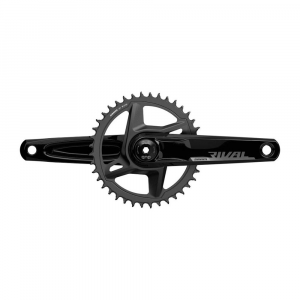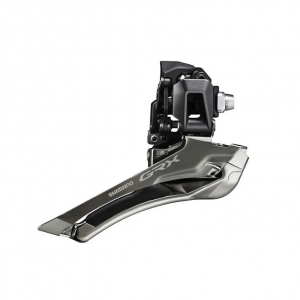There are now enough gravel tires to cover all the different types of gravel throughout the world. From groomed, hard packed surfaces that feel very similar to pavement, to baby-head filled, winter-eroded remote roads, gravel varies greatly, and it’s only fitting the tires do as well. We will never claim to be an authority on gravel gear for your area, but can only describe in detail what we think is the ideal terrain for gravel bikes and tires we test.
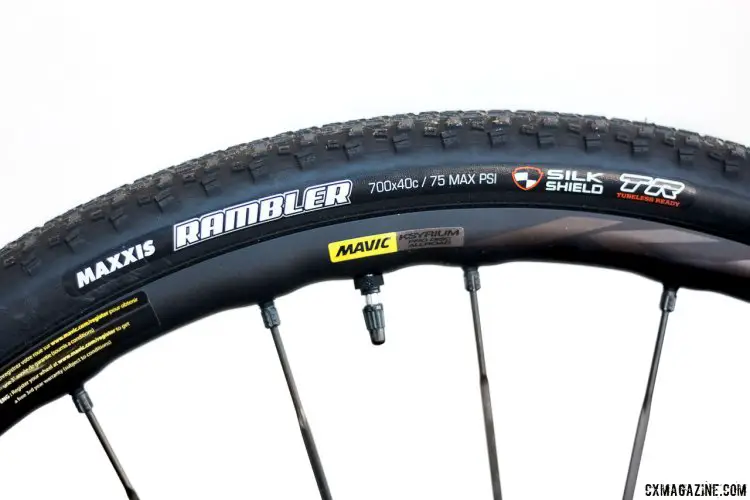
The Rambler 40c 120tpi EXO tire is a lightweight gravel champ that we’ll try on bumpy cyclocross races, while the 60tpi SilkShield adds more protection for rocky gravel courses. Maxxis Rambler 40c gravel tire review. © Cyclocross Magazine
The two versions of the 700x40c Maxxis Rambler gravel tires, in our opinion, sit smack dab in the middle of the wide range of gravel tires from all the different manufacturers. With 30c handmade slicks on one end, to 45c behemoth and wider knobby, puncture-protected casing tires on the extreme end, the Rambler aims to master the 80% of gravel and dirt roads that most of us encounter on rides near home.
Shaving Grams and Width
A 40c tire might sound like a pretty burly option, and a year or two ago we might have agreed with you, but 40c tires are the new normal in gravel, and the Rambler if anything is undersized, measuring just 37c on a 17.5mm internal width rim, and 37.6mm on a 19mm width rim, the Mavic Ksyrium Pro Disc All Road.
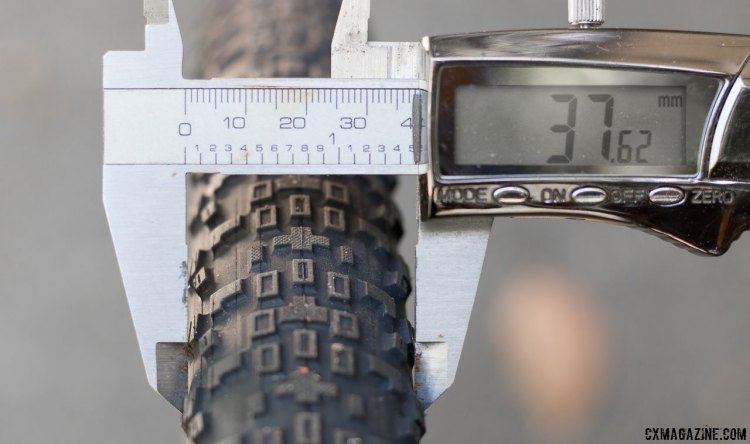
On a 19mm internal width rim, the Rambler is still far short of 40mm. Maxxis Rambler 40c gravel tire review. © Cyclocross Magazine
It may seem like Maxxis is skimping you on volume, but it offsets this with suppleness and weight savings. The 120tpi tire is noticeably supple, even when not inflated, as the thin casing noticeably droops as you hold it in your hand and is more compliant at a given pressure than other popular gravel tires. On our scale, the Rambler weighs just 384 grams, which puts it lighter than many narrower cyclocross tires that weigh 400 grams or more.
That’s almost 200 grams lighter than many gravel tires, including the Vittoria TNT Adventure Trail. Swap out two similar weight tires with a pair of 120tpi Maxxis Rambler tires and you can save close to a pound. We probably don’t have to tell you that it’s not uncommon for cyclists, including gravel racers, to spend over a thousand bucks on wheels to shed 300-400 grams. For about a hundred bucks on tires you can match that weight savings, and arguably shed more rotating weight since the weight savings is all in the tires, not spokes, hubs, nipple or rims.
Why is Cyclocross Magazine talking about weight in relation to gravel? Isn’t gravel about steel bikes, wool jerseys and handlebar bags? While not all gravel racers are weight weenies, and finishing is often the main goal for the longer events, with hilly gravel events that last for hours, weight savings can be justified even if you’re not sprinting out of hairpin turns and throwing your bike on your shoulder. However, weight savings do you no good if you keep flatting, crashing or spinning your wheels and can’t finish the race. [See our Wednesday Wondering piece on avoiding tire cuts with gravel tires.]
Weight savings always comes with some trade-off, and in the case with the Rambler, the lightweight casing is more fragile than a tire that’s 200 grams heavier. This fact alone makes the tire one we’d pass over if we know we’re headed to a very rocky area, as the thinner casing can be easier to cut.
Heading out for some dirt and gravel road rides, or some buff singletrack or fire roads? The Rambler’s supple casing offers a smooth ride, and easily makes up for its smaller volume by offering more compliance than stiffer, bigger volume tires. If the lower volume disappoints you, and you’ve got access to wider rims, you can push these tires out to 43c on a 29mm internal width rim. We’ve done it with the American Classic Wide Lightning with great success, but your mileage may vary.
A Fast-Rolling Tread for Hardpack Gravel…and Cyclocross?
The Rambler achieves some of its weight savings through a low profile knob pattern. It’s fast rolling, with a moderate side knob for cornering grip, and is relatively quiet on the pavement. It does fine with a bit of loose-over-hard road conditions, but when the road points up, or the loose stuff gets deep, you’ll have to manage some tire slip.
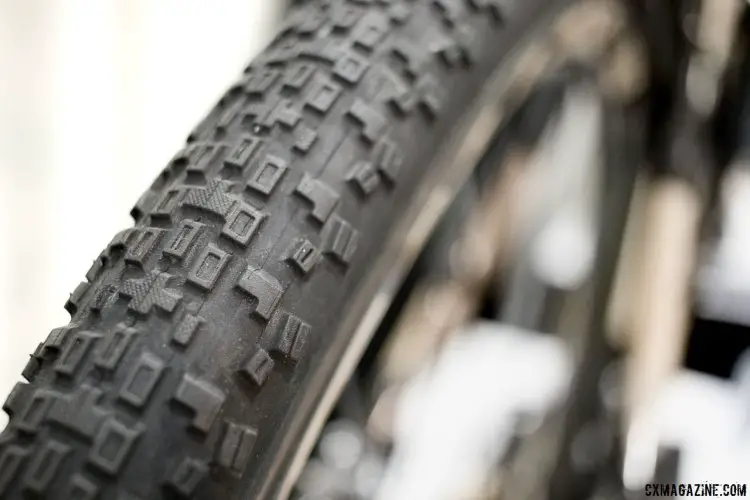
The New 40c Maxxis Rambler does well on hardpack gravel, and is a tempting high-volume option for bumpy cyclocross races. © Cyclocross Magazine
Cyclocross racers shouldn’t count out the Rambler simply due to its listed width or gravel label. With a weight that dips into cyclocross territory but with more volume than every cyclocross tire, the Rambler makes an excellent choice for tubeless cyclocross racers tackling bumpy hard pack or grassy courses, especially for heavier racers, if there’s enough tire clearance. On a cyclocross course, we feel the tire is a bit better as a rear tire than a front tire, simply because the low profile tread grips better under more body weight.
If you’d rather save money more than weight, or hope to add more flat protection, Maxxis also offers a 60tpi version than gains about 40g more due to a heavier casing and a higher level of flat protection with the Silk Shield belt instead of the EXO casing. We’ve ridden both, and find the 120tpi marginally more compliant, both in riding and under the finger test.
How to choose between the two? Maxxis describes its EXO protection:
An extremely cut-resistant and abrasion-resistant material added to the sidewalls of select mountain tires. This densely woven fabric is also lightweight and highly flexible, ensuring that the performance of the tire remains unaffected. Choose EXO Protection for exceptionally rocky, treacherous trails where the chance of sidewall cuts and abrasions is high.
While SilkShield is described as:
SilkShield offers protection from bead to bead whereas Silkworm is found under the tread only. SilkShield provides an additional level of protection for sidewalls in addition to under the tread.
If you’re out in rocky terrain, the heavier 60tpi tire, with the SilkShield protection under the tread, should offer more flat protection. If rocks aren’t prominent in your mixed terrain riding and racing, the 120tpi version will be more supple. While we had good luck with an EXO tire at 28psi on a wide rim out back at the rocky 2016 Lost and Found gravel race, the much faster Barry Wicks used the 120tpi EXO versions and had a different experience. With the confidence of a suspension fork and dropper post, Wicks bombed the descents but flatted his tires and limped home after needing to completely replace a tire out on the course. So if a Triple Crown is on the line, opt for the insurance of the SilkShield protection, or a heavier/bigger/more protected tire. Or as Carl Decker maintains, ride to protect the tires.
The tires grip well on hardpack dirt and gravel, but when conditions get really loose or wet, the low profile tread doesn’t have enough bite to inspire confidence like a taller knob Bruce Gordon Rock N’ Road tire might, especially when the road points way up. In corners, the Rambler’s round profile and side knobs provide predictable grip, but in deep, loose conditions there’s not quite enough knob to cut through. It’s definitely not a mud tire, and isn’t trying to be one. But as we said earlier, the tread works well for 80% of the riding that most of us do, and that’s a pretty good start.
The tread seems pretty durable if you ride mostly off-road, but if you’ve got some pavement miles to the fun stuff, the low-profile knobs’ edge will start to round.
Proper Perspective
We’ll admit it. After measuring the tire and finding it just over 37c on our rims, we were a bit deflated. Yet after riding it, the supple ride and weight savings more than make up for the narrower width if sharp rocks aren’t the main feature in your riding. And for some cyclocross and gravel cyclists with limited tire clearance unable to fit true 40c tires, the narrower width might squeeze into your cyclocross frame, albeit with compromised mud clearance.
However, unless you’re focused on smooth groomed dirt roads, all of this discussion about suppleness and weight savings is pretty much moot if you’re running inner tubes and therefore high pressure to avoid flats on your gravel setup. Riding lower pressure and swapping heavy 200g inner tubes for about 100g of sealant are two adjustments that should be higher up on your list.
But if you’ve got tubeless wheels but not tubeless tires, and haven’t made the leap to tubeless yet, the Rambler could make a fine choice to gain compliance, save weight and convert to tubeless. It could also help create a very fast set of tubeless wheels for cyclocross racing on hardpack, bumpy terrain. The EXO 120tpi tires are lighter than most 33 or 34c tubeless cyclocross tires, and the high volume, supple casing and low profile tread will get you rolling faster than a stiffer, narrower or bigger knob tire as well.
One last note on these tires – we’ve found Maxxis tires easier to get on the rim than ultra-tight tires from companies like WTB TCS, Vittoria and IRC tubeless tires, but unfortunately that means they’re not ideal choices for some tubeless rims, especially certain Road Tubeless rims designed around high pressure systems. Give your setup a finger burp test or a hard ride before lining up for your first race.
Many of us love the growth in gravel products not because it’s opened new terrain or types of riding, but because it’s provided so many great options for us to ride the same terrain we’ve always ridden, just with more comfort and speed. Maxxis calls the Rambler’s tread a “gravel-specific tread pattern,” and so far, we’re liking it on gravel and dirt roads, trails and grass. Don’t be surprised if you see one of us also racing them when it’s dry this cyclocross season.
Maxxis Rambler 40c Gravel Tire Specs:
MSRP: $64
TPI: 120tpi with EXO protection, 60tpi with Silk Shield Protection
Weight: 384 grams (120 tpi EXO), 421g (60 tpi Silk Shield)
Width: 40mm list, 37.6mm on 19mm internal width rim at 35 psi, (43mm on 29mm internal width rim)
More info: maxxis.com













